RSS-канал «ESA Top News»
Доступ к архиву новостей RSS-канала возможен только после подписки.
Как подписчик, вы получите в своё распоряжение бесплатный веб-агрегатор новостей доступный с любого компьютера в котором сможете просматривать и группировать каналы на свой вкус. А, так же, указывать какие из каналов вы захотите читать на вебе, а какие получать по электронной почте.
Подписаться на другой RSS-канал, зная только его адрес или адрес сайта.
Код формы подписки на этот канал для вашего сайта:
Последние новости
Week in images: 06-10 May 2024
2024-05-10 16:10
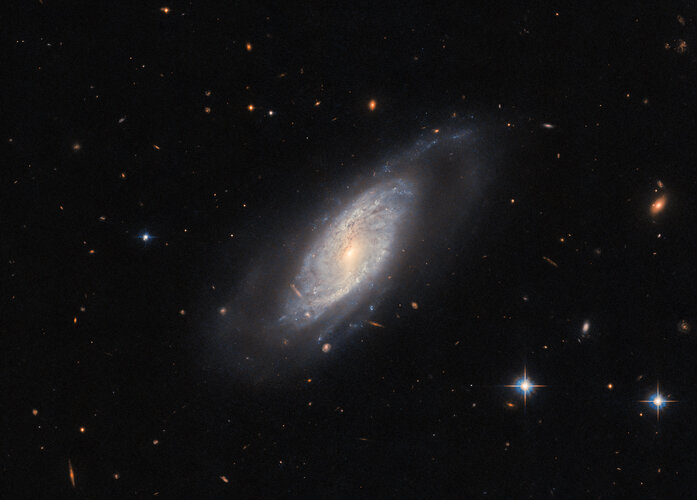
Week in images: 06-10 May 2024
Discover our week through the lens
Earth from Space: Bolivian salt lakes
2024-05-10 11:00
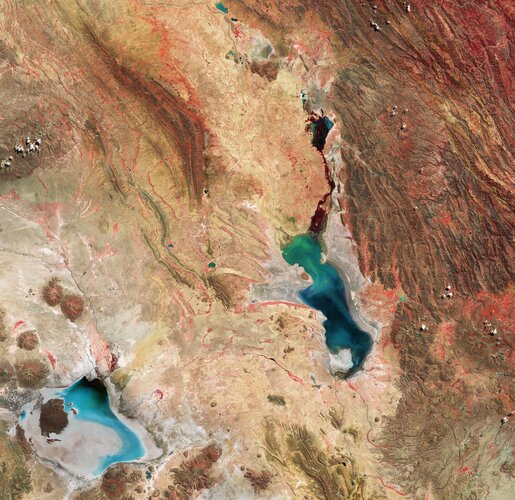 Image:
This Copernicus Sentinel-2 image features salt flats and lakes in southwest Bolivia, near the crest of the Andes Mountains.
Image:
This Copernicus Sentinel-2 image features salt flats and lakes in southwest Bolivia, near the crest of the Andes Mountains.
AI in Earth observation: a force for good
2024-05-09 12:50

The upcoming launch of the Φsat-2 mission is a prime example of the pioneering work that ESA does in the field of AI in Earth observation.
But when it comes to AI, hopes and fears abound in equal measure. In this interview, ESA’s Rochelle Schneider sets the record straight on how this transformational technology is improving access to crucial information on the state and future of our planet.
Webb hints at atmosphere around rocky exoplanet
2024-05-08 18:00
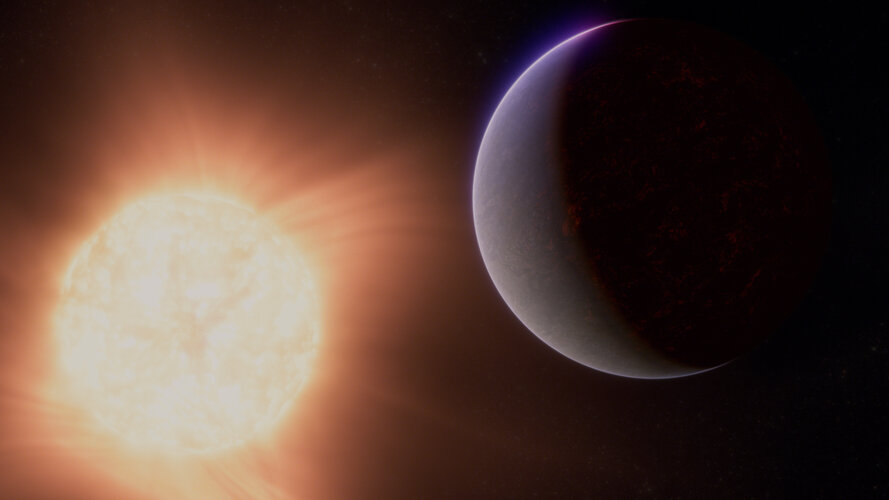
Researchers using the NASA/ESA/CSA James Webb Space Telescope may have detected atmospheric gases surrounding 55 Cancri e, a hot rocky exoplanet 41 light-years from Earth. This is the best evidence to date for the existence of a rocky planet atmosphere outside our Solar System.
Where space weather starts
2024-05-08 15:43
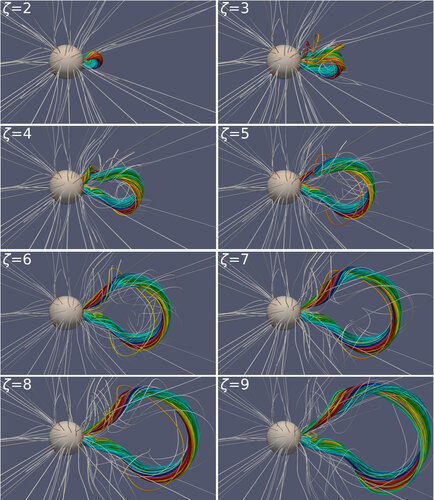 Image:
Where space weather starts
Image:
Where space weather starts
Space Team Europe for Ariane 6: Aline Decadi
2024-05-08 13:00
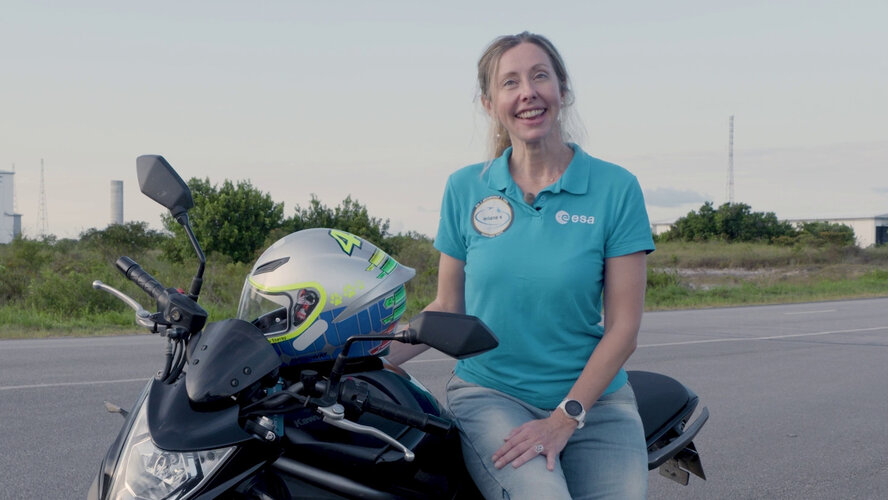 Video:
00:03:47
Video:
00:03:47
They say it takes a village to raise a child. To launch a rocket, we have the combined expertise and passion of Space Team Europe. Aline Decadi is one of many making the first Ariane 6 launch possible and has been interviewed as part of a series highlighting some of the people that make up this dream team.
Working for ESA, Aline Decadi is Launch System Dependability and Safety Lead engineer on Ariane 6 meaning her role is to predict what could go wrong at any moment to protect the people working at Europe’s Spaceport. Passionate about space with an international career in spacecraft and rockets, Aline is also a happy motorcyclist.
Stay tuned for more from #SpaceTeamEurope: an ESA space community engagement initiative to gather European space actors under the same umbrella sharing values of leadership, autonomy, and responsibility.
Find more videos from Space Team Europe.
Ariane 6 launches 3Cat-4: reflecting on Earth
2024-05-08 09:59
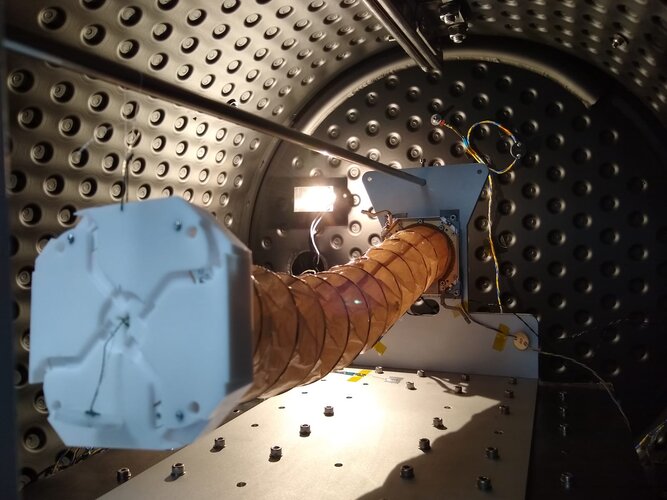
Europe’s newest rocket soon launches, taking with it many space missions each with a unique objective, destination and team at home, cheering them on. Whether launching new satellites to look back and study Earth, peer out to deep space or test important new technologies in orbit, Ariane 6’s first flight will showcase the versatility and flexibility of this impressive, heavy-lift launcher. Read on for all about 3Cat-4, then see who else is flying first.
Mission control ready for EarthCARE despite disruption
2024-05-05 11:00
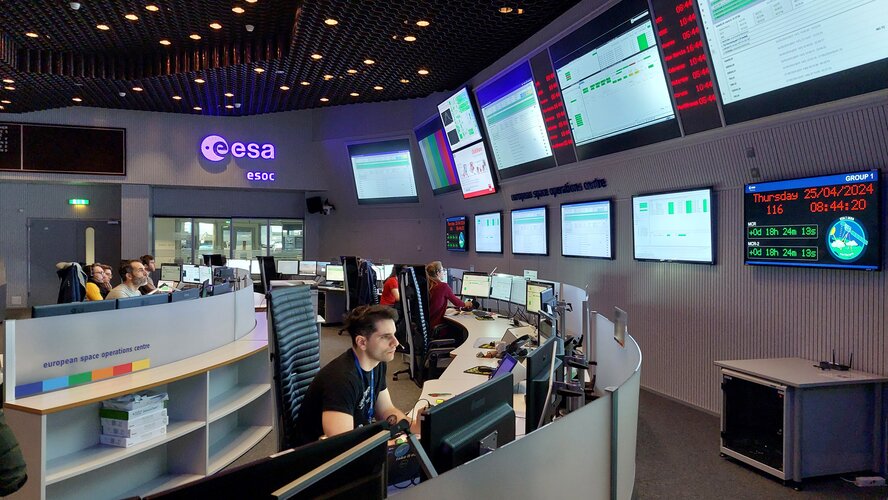
Teams at ESA’s European Space Operations Centre in Darmstadt, Germany, are currently engaged in intensive preparations for the critical ‘Launch and Early Orbit’ phase of the agency's EarthCARE satellite.
Meet the team behind EarthCARE
2024-05-03 15:00
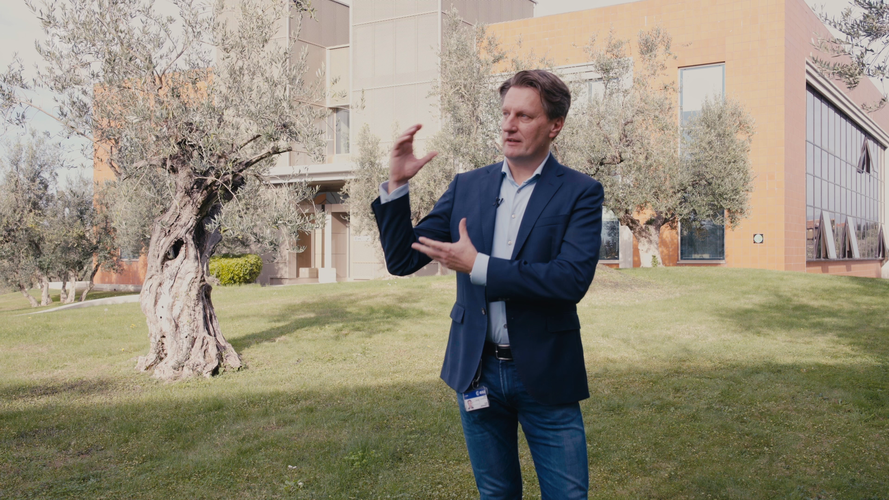 Video:
00:04:54
Video:
00:04:54
As we approach the launch of ESA’s EarthCARE mission, we caught up with some of the scientists, engineers and experts behind the mission.
With the climate crisis increasingly tightening its grip, ESA’s Earth Cloud Aerosol and Radiation Explorer mission (EarthCARE) will shed new light on the complex interactions between clouds, aerosols and radiation in Earth’s atmosphere.
EarthCARE is the largest and most complex Earth Explorer mission. It comes at a critical time in the development of kilometre-scale resolution, global climate models and will provide an important contribution to an improved understanding of cloud convection and its role in Earth’s radiation budget.
EarthCARE is an ESA mission, but it has been developed as a cooperation between ESA and JAXA, the Japanese Space Agency.
This video features interviews with: Pavlos Kollias from Stony Brook University – McGill University, Thorsten Fehr, EarthCARE Mission Scientist at ESA, Robin Hogan, Senior Scientist at ECMWF, Dirk Bernaerts, EarthCARE Project Manager at ESA, Kotska Wallace, Mission and Optical Payload Manager at ESA, Tomomi Nio, EarthCARE Mission Manager at JAXA, Eiichi Tomita, EarthCARE/CPR Project Manager at JAXA, Ulla Wandinger, Senior Scientist at Leibniz Institute for Tropospheric Research and Bjoern Frommknecht, EarthCARE Mission Manager at ESA.
Follow the EarthCARE launch campaign blog for more updates.
Access the related broadcast quality footage: animations / interviews / satellite stock footage
Week in images: 29 April - 03 May 2024
2024-05-03 14:30
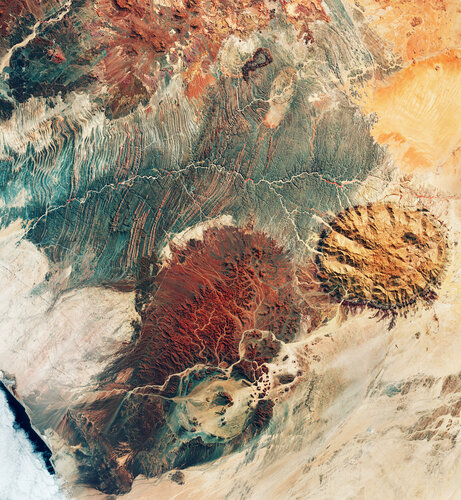
Week in images: 29 April - 03 May 2024
Discover our week through the lens
Earth from Space: Namibian landforms
2024-05-03 11:20
 Image:
This image may resemble the surface of Mars, but it was actually captured by the Copernicus Sentinel-2 mission, revealing the stunning terrain of northwest Namibia.
Image:
This image may resemble the surface of Mars, but it was actually captured by the Copernicus Sentinel-2 mission, revealing the stunning terrain of northwest Namibia.
Seven ways ESA has cut its environmental footprint
2024-05-03 11:19

ESA is committed to almost halve its greenhouse gas emissions linked to energy consumption by 2025 compared to 2019 levels. But how can ESA keep accelerating the use of space for the sustainable development of society while reducing its emissions?
ESA’s cloud and aerosol satellite aerosol-free
2024-05-03 10:29
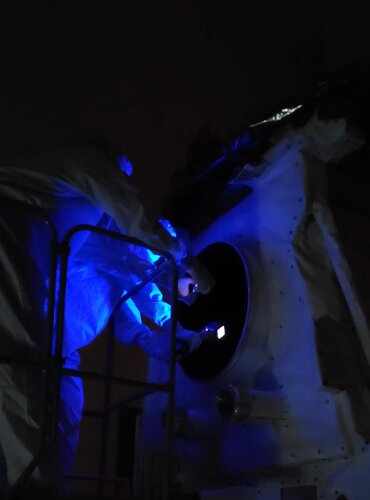
A few weeks ago, a team of engineers carefully extracted ESA's EarthCARE satellite from its protective transport container, initiating a meticulous process of inspection, testing and preparation for its liftoff later this month from the Vandenberg launch site in California.
Amidst an extensive checklist of tasks, was a rigorous effort to guarantee that the satellite is in pristine condition, underscoring the thorough attention to detail essential to making the satellite ready for launch.
Ariane 6 launches: Exolaunch’s EXOpod Nova
2024-05-03 10:00
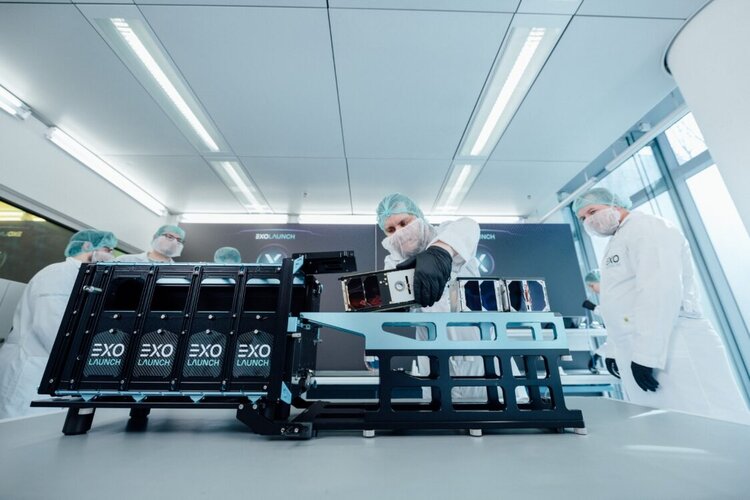
Europe’s newest rocket soon launches, taking with it many space missions each with a unique objective, destination and team at home, cheering them on. Whether launching new satellites to look back and study Earth, peer out to deep space or test important new technologies in orbit, Ariane 6’s first flight will showcase the versatility and flexibility of this impressive, heavy-lift launcher. Read on for all about EXOpod Nova, then see who else is flying first.
Ariane 6 stands tall for launch
2024-05-02 19:00
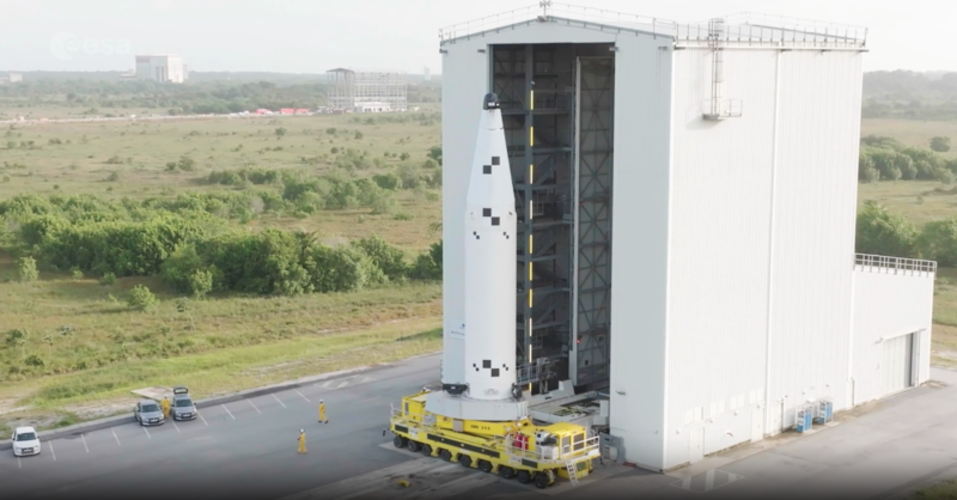 Video:
00:02:59
Video:
00:02:59
Last week, Ariane 6’s central core – the main body of the rocket – was stood tall at the launch zone and connected to its two solid-fuel boosters. This exciting moment means only one thing: it’s the start of the first launch campaign.
The main stage and upper stage make up the core stage, and they were autonomously driven at 3 km/h from the rocket assembly building to the launch pad, 800 m away. Then lifted by a crane, the Ariane 6 core was stood upright on the launch table.
The two boosters were transported to the launch pad on a specially designed truck and then configured with the rocket body, now holding it upright.
Ariane 6 is due to launch in summer 2024. The heavy-lift rocket will inaugurate a new era of autonomous European space transportation, powering Europe into space to realise its ambitions on the world stage. It will lift off from a modern launch complex at Europe’s Spaceport in French Guiana, carrying with it not just a variety of spacecraft, but also European goals for prosperity and autonomy.
A year in training: ESA's new astronauts graduate
2024-05-02 13:00
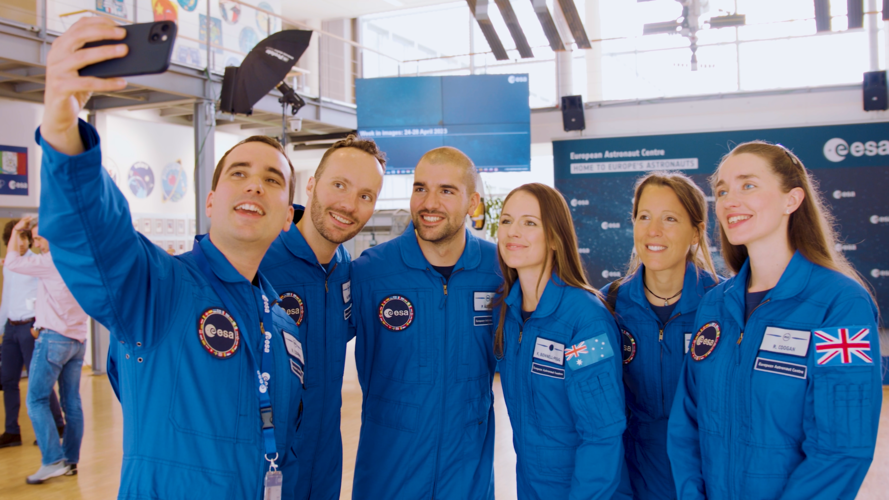 Video:
00:05:16
Video:
00:05:16
ESA's newly graduated astronauts reach the end of one year of rigorous basic astronaut training. Discover the journey of Sophie Adenot, Rosemary Coogan, Pablo Álvarez Fernández, Raphaël Liégeois, Marco Sieber, and Australian Space Agency astronaut candidate Katherine Bennell-Pegg. Selected in November 2022, the group began their training in April 2023.
Basic astronaut training provides the candidates with an overall familiarisation and training in various areas, such as spacecraft systems, spacewalks, flight engineering, robotics and life support systems as well as survival and medical training. They received astronaut certification at ESA’s European Astronaut Centre on 22 April 2024.
Following certification, the new astronauts will move on to the next phases of pre-assignment and mission-specific training - paving the way for future missions to the International Space Station and beyond.
The Sun’s fluffy corona in exquisite detail
2024-05-02 11:00
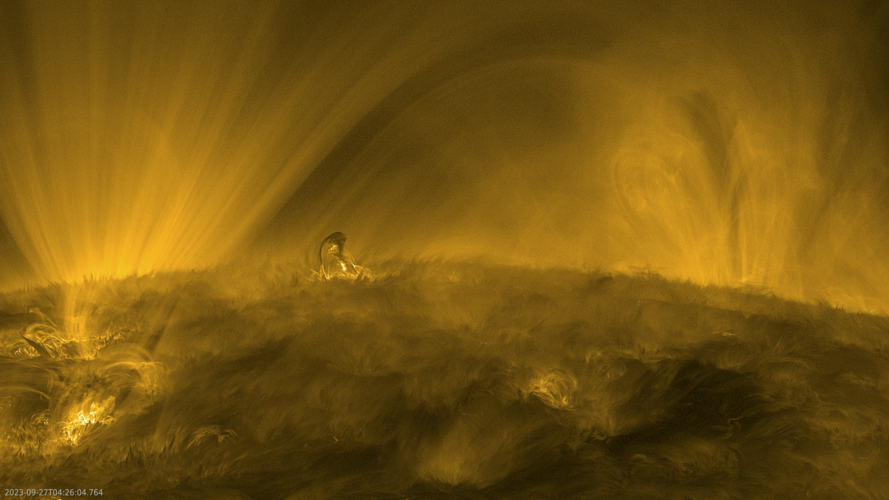 Video:
00:00:48
Video:
00:00:48
This otherworldly, ever-changing landscape is what the Sun looks like up close. ESA's Solar Orbiter filmed the transition from the Sun's lower atmosphere to the much hotter outer corona. The hair-like structures are made of charged gas (plasma), following magnetic field lines emerging from the Sun's interior.
The brightest regions are around one million degrees Celsius, while cooler material looks dark as it absorbs radiation.
This video was recorded on 27 September 2023 by the Extreme Ultraviolet Imager (EUI) instrument on Solar Orbiter. At the time, the spacecraft was at roughly a third of the Earth’s distance from the Sun, heading for a closest approach of 43 million km on 7 October.
On the same day that this video was recorded, NASA’s Parker Solar Probe skimmed just 7.26 million km from the solar surface. Rather than directly imaging the Sun, Parker measures particles and the magnetic field in the Sun’s corona and in the solar wind. This was a perfect opportunity for the two missions to team up, with ESA-led Solar Orbiter’s remote-sensing instruments observing the source region of the solar wind that would subsequently flow past Parker Solar Probe.
Spot the moss, spicules, eruption and rain
Lower left corner: An intriguing feature visible throughout this movie is the bright gas that makes delicate, lace-like patterns across the Sun. This is called coronal ‘moss’. It usually appears around the base of large coronal loops that are too hot or too tenuous to be seen with the chosen instrument settings.
On the solar horizon: Spires of gas, known as spicules, reach up from the Sun’s chromosphere. These can reach up to a height of 10 000 km.
Centre around 0:22: A small eruption in the centre of the field of view, with cooler material being lifted upwards before mostly falling back down. Don’t be fooled by the use of ‘small’ here: this eruption is bigger than Earth!
Centre-left around 0:30: ‘Cool’ coronal rain (probably less than 10 000 °C) looks dark against the bright background of large coronal loops (around one million degrees). The rain is made of higher-density clumps of plasma that fall back towards the Sun under the influence of gravity.
Click here for a version of this video without annotations.
For the best possible video quality, please accept website cookies.
Sticker fun in space!
2024-05-01 09:48
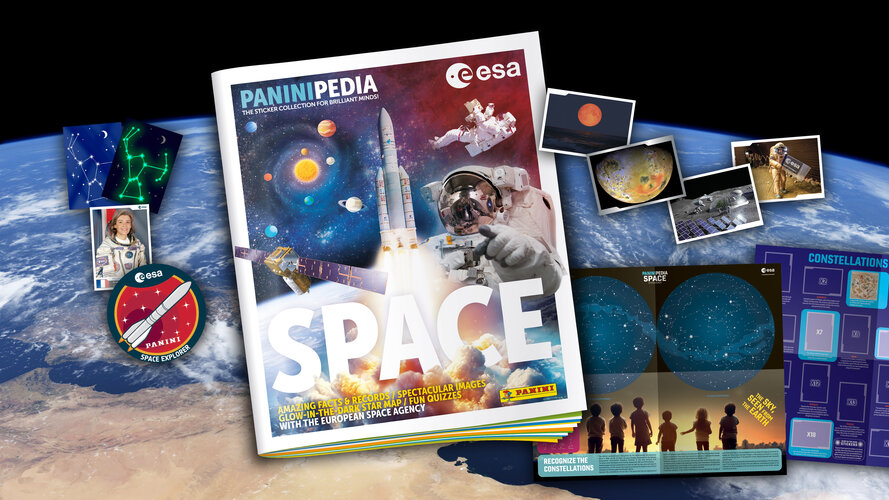
Exciting news for young space fans! PaniniPedia Space, the most complete and up-to-date sticker reference album about space, launches in France on 1 May 2024. Created by Panini in collaboration with ESA, PaniniPedia Space takes readers on a journey of discovery through our Solar System and beyond.
Ariane 6 media kit
2024-04-25 12:04
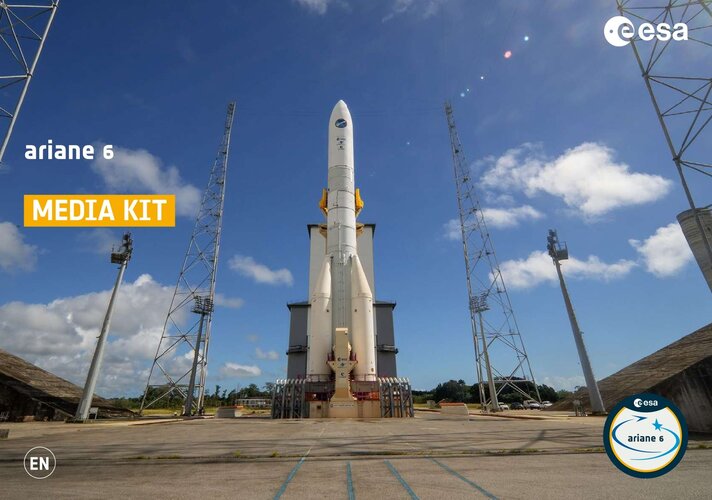
Ariane 6 media kit
Space awaits you! More ESA vacancies open for applications
2023-06-13 11:17
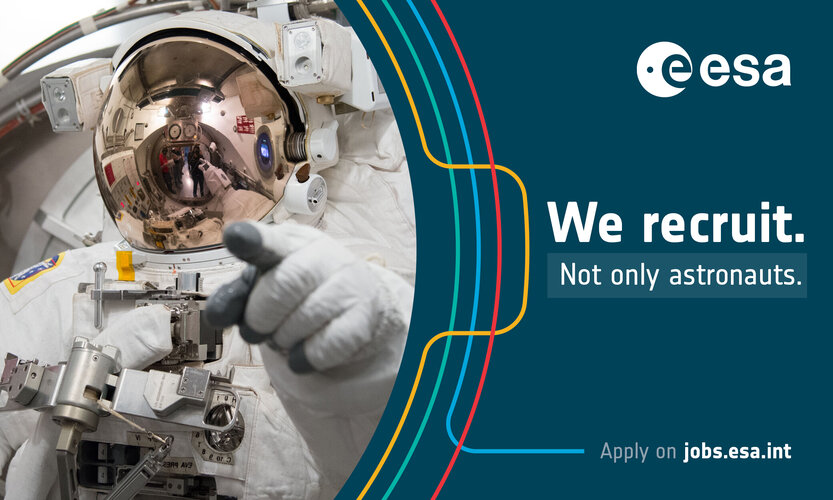
In March, we announced that 2023 would see the publication of over 300 vacancies at ESA. New vacancies keep being published as we continue our search for talented and motivated professionals to join our teams across Europe and support our mission of the peaceful exploration of space for the benefit of everyone. Could ESA be the next step in your career? Read more to find out!
